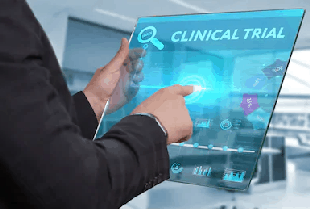Struggles in the Delivery Room: Emergency Birth Procedures


Emergency birth procedures refer to the medical interventions doctors have to use when complications arise during labor. In these circumstances, the safety of the mother and child is in jeopardy, forcing medical professionals to pursue other methods of delivery, such as Cesarean sections (C-sections) and forceps or vacuum extractions.
Emergency birth procedures are more common than you think. For instance, approximately 14% of 32.8% of women had emergency c-sections. You, or someone you know, can easily be one of these women one day. You need to understand the underlying risks of emergency birth procedures. Read on to learn more about these.
Emergency Birth Interventions and Their Risks
Let’s look at three types of emergency birth interventions and the risks they carry.
1. Cesarean Section
A C-section is a surgical procedure that uses incisions on the mother’s abdomen and uterus to deliver the baby. The most common risks include infection at the site of the incision. You will see redness, swelling, and discharge at the wound, causing pain and discomfort. Another common risk is infection of the womb lining. This will lead to fever, pain, and heavy vaginal bleeding.
In rare cases, you might lose too much blood, calling for a blood transfusion. There might also be damage to your bladder or a blood clot in your leg. Both these cases will require further surgery.
2. Forceps Deliveries
In these deliveries, the doctor places forceps around the baby’s head to guide it through the birth canal during long or stalled labor. They are typically used when your baby is in an awkward position or when it’s getting tired. These procedures carry their risks. Forceps delivery complications for the mother include:
-
- 3rd or 4th degree vaginal tearing: This is a vaginal tear involving the muscles or wall of the rectum or anus. It affects eight to 12 out of 100 women having a forceps delivery.
- Blood clots: Assisted births increase the chances of blood clots forming in your legs or pelvis.
- Urinary or anal incontinence: You might involuntary leak urine or stool. The latter is more likely to happen if there’s been a 3rd or 4thh degree tear.
These also carry risks for the baby. However, they are significantly fewer and will heal quickly:
- A bruise might form on the baby’s head that will disappear within a few hours or days.
- Small cuts on the baby’s scalp will heal soon.
- Yellowing of the skin and eyes (jaundice) that can pass in a few days.
3. Vacuum Extraction:
The midwife or obstetrician attaches a vacuum cup known as a ventouse to your baby’s head. Then, they pull on it to help in delivery. This is similar to a forceps delivery and typically carries the same risks. However, according to the National Library of Medicine, the use of vacuum extraction in delivery causes significantly less maternal trauma. There were also more deliveries in the vacuum extraction group in the experiment, which means this method has a higher success rate.
What Needs to Change?
Emergency birth interventions are necessary in most cases. However, asking for consent beforehand must become the standard to restore trust in childbirth care. The patient must be given clear, honest explanations about the risks and alternatives and be allowed to choose. Two other things medical professionals can focus on are:
- Culturally competent care: Hire diverse OB-GYNs to cater to the cultural, linguistic, and emotional needs of patients from all backgrounds.
- Maternal mental-health follow-ups: Postpartum care must extend beyond physiotherapy to emotional well-being, especially to those mothers who have experienced traumatic childbirth.
The mother’s family must be supportive and willing to help her through the journey. You must ensure that mothers feel as safe, comfortable, and happy in their post-pregnancy lives as they did during pregnancy.
Endnote
Childbirth can be as complex as it is personal. While emergency intervention is necessary, it is not without its consequences. Being informed can save someone’s life, whether you are an expectant parent, a healthcare provider, or a loved one. Read the points above to expand your understanding of childbirth and its outcomes.





